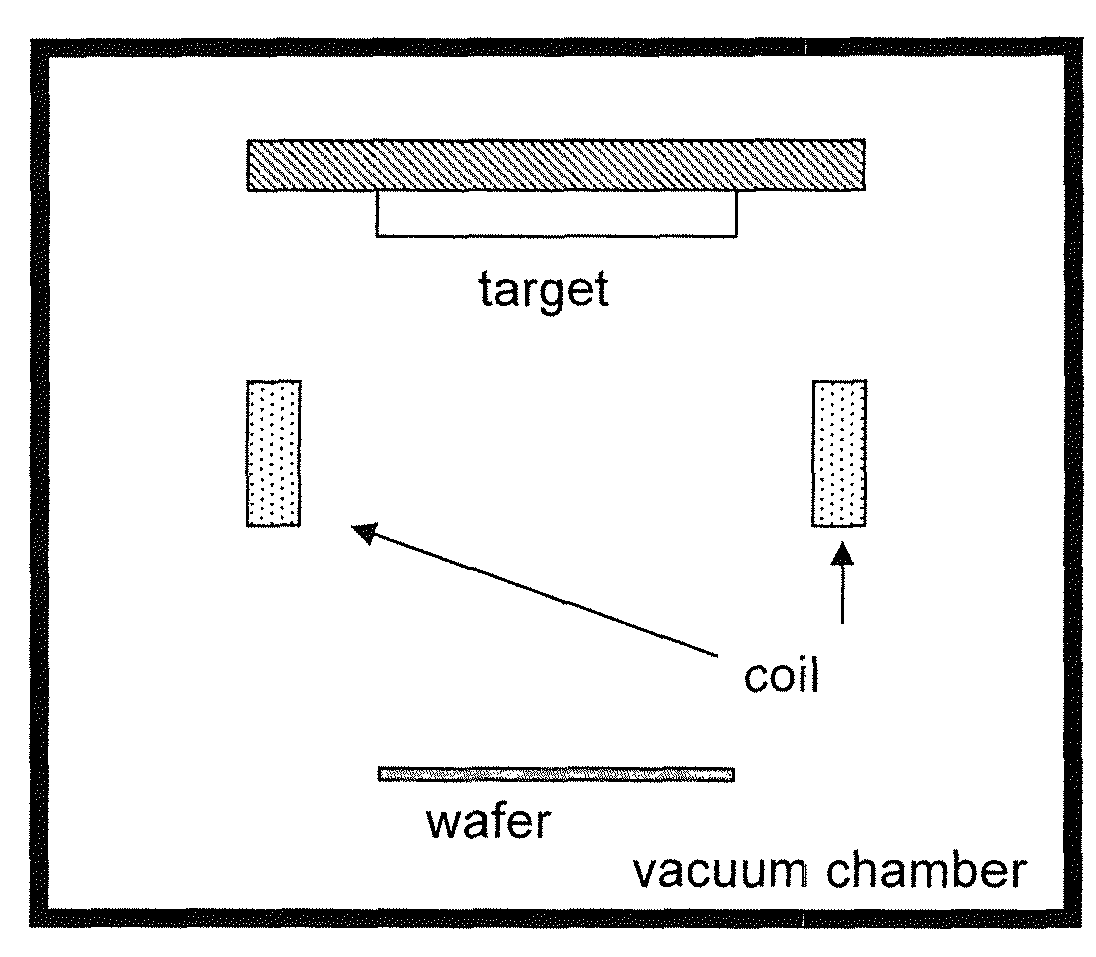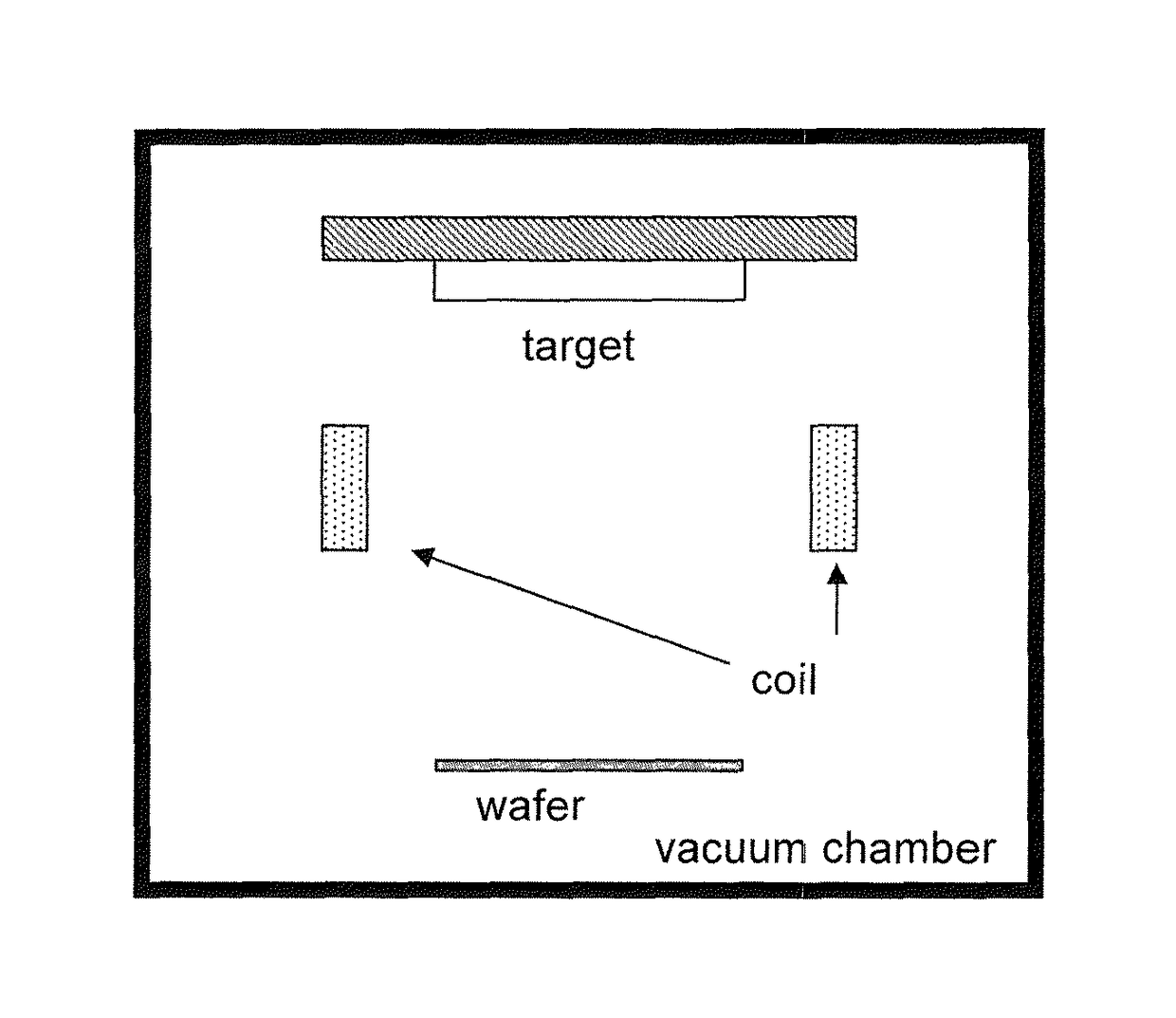Sputtering target and/or coil, and process for producing same
a technology of sputtering target and coil, which is applied in the direction of diaphragms, metal-working apparatus, metallic material coating processes, etc., can solve the problems of unsatisfactory vacuum degree, inability to solve countermeasures against unsatisfactory vacuum degree, and inability to reduce the volume of hydrogen in conventional mechanical processing. , to achieve the effect of reducing adsorption or occlusion of hydrogen, increasing vacuum, and uniform and fine structures
- Summary
- Abstract
- Description
- Claims
- Application Information
AI Technical Summary
Benefits of technology
Problems solved by technology
Method used
Image
Examples
example 1
[0089]A tantalum raw material having a purity of 99.997% was molten by an electron beam and was cast into an ingot or billet having a thickness of 200 mm and a diameter of 200 mm. Subsequently, this ingot or billet was drawn at room temperature and then was subjected to recrystallization annealing at 1500K to obtain a material having a thickness of 100 mm and a diameter of 100 mm.
[0090]The resulting material was subjected to cold drawing, upset forging, and recrystallization annealing at 1173K. Subsequently, a cold rolling was performed again and a process of annealing at 1173K (900° C.) was repeated twice. After finishing processing, a target material having a thickness of 10 mm and a diameter of 320 mm was obtained.
[0091]The target prepared as above was adjusted the surface roughness by finishing processing, and dehydrogenation thereof was performed in the following conditions:
[0092]Surface roughness of the target: 0.2 μm
[0093]Heating conditions of the target: vacuum atmosphere, a...
example 2
[0096]A target material prepared in the same conditions as those in Example 1 was adjusted the surface roughness by finishing processing, and dehydrogenation thereof was performed in the following conditions:
[0097]Surface roughness of the target: 0.2 μm
[0098]Heating conditions of the target: vacuum atmosphere, a temperature of 700° C., for 2 hours.
[0099]The sputtering target dehydrogenated by heating was installed in a sputtering apparatus (vacuum chamber) within 1 hour. As a result, the hydrogen gas volume in Example 2 was 100 μL / cm2. The degree of vacuum before sputtering was 1×10−7 Pa, and the results were good.
example 3
[0100]A target material prepared in the same conditions as those in Example 1 was adjusted the surface roughness by finishing processing, and dehydrogenation thereof was performed in the following conditions:
[0101]Surface roughness of the target: 0.2 μm
[0102]Heating conditions of the target: argon gas atmosphere, a temperature of 700° C., for 2 hours.
[0103]The sputtering target dehydrogenated by heating was installed in a sputtering apparatus (vacuum chamber) within 2 hours. As a result, the hydrogen gas volume in Example 3 was 300 μL / cm2. The degree of vacuum before sputtering was 2×10−7 Pa, and the results were good.
PUM
| Property | Measurement | Unit |
|---|---|---|
| time | aaaaa | aaaaa |
| time | aaaaa | aaaaa |
| time | aaaaa | aaaaa |
Abstract
Description
Claims
Application Information
 Login to View More
Login to View More - R&D
- Intellectual Property
- Life Sciences
- Materials
- Tech Scout
- Unparalleled Data Quality
- Higher Quality Content
- 60% Fewer Hallucinations
Browse by: Latest US Patents, China's latest patents, Technical Efficacy Thesaurus, Application Domain, Technology Topic, Popular Technical Reports.
© 2025 PatSnap. All rights reserved.Legal|Privacy policy|Modern Slavery Act Transparency Statement|Sitemap|About US| Contact US: help@patsnap.com


